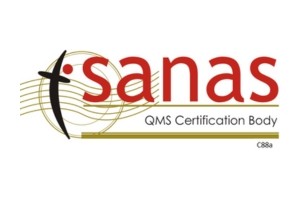There are six (6) implementable clauses within ISO 45001:2018
Occupational Health and Safety Management Standard.
Within this series of posts over the next six weeks we will discuss the requirements to all six clauses and the correct interpretation thereof.

Clause 4: Context of the organization New from ISO 45001:2018, this clause “sets the scene” for the organization and the scope and boundaries for the OH&S MS.
Importantly, ISO 45001 should be aligned to the strategic direction of the organization, embedding OH&S management into the core business functions rather than as a standalone discipline. Within this clause, the organization has to determine the internal and external factors that may affect its ability to achieve the intended outcomes of its OH&S MS.
Context of the organization: How and why?
Given that the way in which businesses operate and their impacts have changed in the last ten years with the growth of the internet and trading across borders, you can see why defining the context of your organization has become a key part of the ISO standards. OH&S is no different, in that organizations have more and wider-reaching issues to consider when planning the operation of the OH&S system itself. So, when defining the context of your organization, what do you need to consider?
Firstly, let us look at the internal issues we can consider:
- The competence of your workforce
- The commitment of your people
- The willingness to co-operate and keep within stated parameters
- Your communication methodologies and their effectiveness
And critically, the external factors:
- Legislation and local laws: Obviously, this is critical to your OH&S system and the well-being of your employees.
- Economic and political conditions: These may have to be reflected in your policies, programs, and objectives.
- Union expectations: Again, this is an aspect that may have to be considered when defining your organizational context.
- Stakeholders and shareholders: Whether considered internal or external, their expectations will need to be considered.
- National or international agencies: These external bodies may also have advice or requirements that will require redefinition of your organizational parameters.

So, as we can see above, there are many issues – both internal and external – that can change the way we define the “context of the organization” for the purpose of the OH&S system.
Only when all of them are considered and defined can we say that we have performed this task, setting the scene for the OH&S system to be as effective as possible. Documenting this process is also advised, in order for your organization to be able to share this with stakeholders and auditors, and to enable a constant review of these parameters to take place in our ever-changing world.
Defining the context of the organization: The benefits
Complying with laws and regulations is one major benefit of carrying out this new requirement, which will protect your organization from both a legislative and financial penalty point of view. But, as ever, the well-being of your workforce is the ultimate goal and the most critical benefit. Ensuring the operations your organization undertakes to produce the goods and services it does are considered will ensure that your definition of context remains relevant. In the modern world, with its ever-changing demands, this is more critical than ever.
Recent discoveries over more modern illnesses such as repetitive strains, stress, and depression mean that legislation will continue to change, and if your definition is documented, you can effectively make changes to ensure the information you deliver through your OH&S remains relevant and topical. This is where the most tangible benefit will be seen, in allowing your OH&S system to promote prevention as opposed to delivering cure. And to your workforce, that will be the biggest benefit of all.
Join our mailing list to receive upcoming posts: http://www.isoqar.co.za/





